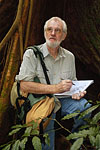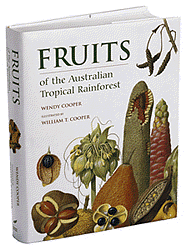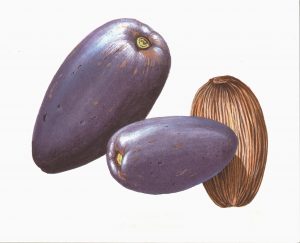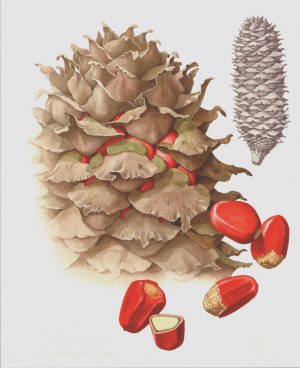Description
THE AUTHOR – Wendy Cooper

Inspired by the magnificent diversity of plants in the northern Queensland tropical rainforest – where Wendy and husband Bill Cooper built their home in 1987 – Wendy spent the following years immersed in the study and collection of botanical specimens found there. This led to the publication in 1994 of her first book Fruits of the Rainforest. It was described by well-known tropical biologist, John Corner, as ‘a pioneer work of outstanding merit’. This publication which identified 626 species sold out within a few years and is considered a collector’s item today.
Wendy’s serious passion for this spectacular habitat continued, and along with Bill, she spent the next ten years making excursions to remote areas of the rainforest collecting and researching specimens. The result of Wendy’s magnificent effort has been the publication of this long awaited book, Fruits of the Australian Tropical Rainforest.
This definitive work is a credit to Wendy’s unrelenting pursuit of botanical knowledge and provides a comprehensive guide to Australian tropical rainforest fruits. Her 17 years of dedication to this project is of huge scientific and cultural significance to Australia and her botanical expertise has left us a legacy that will form an integral piece of our botanical heritage.
THE ARTIST – William T. Cooper

William T. Cooper first gained artistic prominence for his ornithological illustrations in A Portfolio of Australian Birds. His international reputation was firmly established in 1973 with the publication of Parrots of the World and today Bill’s paintings are housed in public galleries, government institutions and private collections throughout the world. Bill’s talent for combining scientific accuracy with vibrant artistic technique was formally recognized in 1990 when the Academy of Natural Sciences of Philadelphia (USA) awarded him the gold medal for his ‘artistic endeavours and life’s work which have contributed to mankind’s better understanding and appreciation of living things’. He was the first Australian to receive this prestigious award and in 1994 was awarded the Order of Australia (AO) for his contribution to Art and Ornithology.
The 1,236 fruits illustrations reproduced in this book show William T. Cooper’s dedication to the world of nature. He captures the finest details – from tiny spines on pods to fibres of palm fruits and imperfections created by living creatures of the rainforest. Each painting shows the ranges in size, shape and colour of the fruit as well as a cross-section exposing the distinctive colour and texture variations of the seed. It has been a rare privilege to publish art of such magnitude, skill and beauty.
Rainforests
Australia’s Tropical Rainforests are the oldest continually surviving rainforests on earth. It is a living museum representing all the important stages of the earth’s evolutionary history… Although they represent less than one tenth of one percent of the land surface of Australia, they have the highest diversity of species on the continent. – WET TROPICS MANAGEMENT AUTHORITY
The rainforest inspires awe with its dense vegetation, the amazing diversity of brilliantly coloured fruit and dazzling display of mosses, lichens and vines. Commonly found entwined on trunks and branches, epiphytes and strangling figs highlight the intense struggle for life in this fragile habitat. These unique fruits come in a seemingly endless array of colours and shapes and are more diverse in the rainforests than in other types of forest. Numerous fruits that we now find in our markets have their origins in the rainforest.
Most rainforest fruits are fleshy which protects the seed while it matures. As the fruit ripens it is often carried off or eaten by birds and mammals. This may result in it being deposited well away from the parent plant and to ensure survival, most plants produce very large numbers of fruits. It is generally believed that through the attractiveness of their fruits, plants entice animals to eat and disperse their seeds. Some rainforest fruits are extremely toxic to humans but not to certain species of birds and mammals. Indigenous Australians have learnt unique and special ways to treat certain poisonous species, enabling the fruits to be consumed without adverse effects.
Rainforests are not just the most beautiful forests in the world. They are unimaginably complex and exquisitely simple. They were ancient before Gondwana sundered but they are new and evolving every second. They construct massively-buttressed tree-giants and they perfect the details of the most minute orchids. Rainforests grow on cold misty peaks, in coastal crocodile swamps, on dry inland rock piles and wind blasted beaches. They throw life and death in our faces. They heap paradox on contradiction and keep us transfixed. Over-awed by the extravagance yet attracted to the delicacy, we grope for some way to understand them. The fruits of the rainforest provide a way in. The breathtaking diversity of form, colour and function stimulates curiosity, joy, and a start to comprehending the intricate, driven agenda of plants and animals. Lavish or parsimonious, devious or straightforward, painted or cryptic, big as a human head or tiny as dust, grasping for an immediate germination advantage or mindful of the far future, the fruits provide never-ending fascination. They are an indispensable part of the rainforest story.








